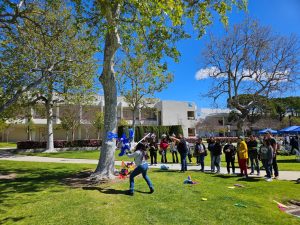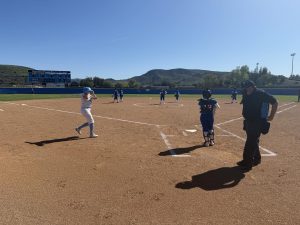Editor’s note: Student’s dilemma: to eat or not to eat?
October 27, 2014
In an effort to prevent the infestation of ants, flies, or mice, Moorpark College has restricted food to only a few areas on campus.
As the Editor-in-Chief of the Student Voice newspaper, I spend a lot of time at school and being allowed to eat in the newsroom has always been convenient considering I barely have time to take a break. Before doing the proper research on the issue I was among the outraged group of students who were not happy with the decision.
Now, I am among the group of people who believe that the current pest problem is a much bigger issue than not being able to eat in the buildings, and the reasons behind the decision to create this restriction has a bigger impact in our daily lives.
According to Director of Facilities, Maintenance and Operations John Sinutko, the problem is currently being managed through the Integrated Pest Management (IPM) program, which is an approach that relies on a combination of common-sense practices, the information on the life cycles of pests, and their interaction with the environment in combination with available pest control methods in order to prevent any harm to people, property, and the environment.
Not being able to eat between classes in the buildings when some students spend an entire day at school is undoubtedly an issue. A much more complicated issue, however, arises when students are not careful enough and the food left behind becomes a contributing factor to infestations.
“Food that is improperly stored or [the] lack of thorough cleaning of areas immediately after food has been consumed is a major contributing factor to pest infestations on campus,” said Sinutko.
Food is not allowed in any of the Moorpark College buildings with the exception of the Campus Center (former cafeteria area), kitchen in the presidential suit, and classified staff lounge. The restriction, which includes all classrooms, offices, and meeting spaces in all buildings on campus and the High School at Moorpark College, according to Vice President of Business services Iris Ingram on a note posted on the MyVcccd portal earlier this semester.
Art major Elizabeth Lawrence shared her concerns regarding the restriction. After a full day of work and night classes, the inability to eat almost anywhere on campus becomes an issue when the campus center is closed by the time she gets a break during her three-hour classes.
“I think the Student Center should be open until late, otherwise it’s ridiculous that there’s such prohibition,” said Lawrence. “Where am I supposed to eat? It makes no sense.”
We must recognize the college’s effort in getting rid of the infestation problem while being environmentally conscious.
Despite the college’s efforts to maintain campus cleanliness, safety, and appearance on the community college, students are mostly concerned about not being able to eat, more than having an infestation-free campus.
It is vital to have some extra designated lounge areas around campus where we are allowed to eat. Keeping the campus center open after hours could also ease students’ complaints on not having a place to eat.





